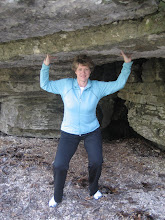I was fortunate to review Janelle Hertzler's book Seasons of Solace. Here is an interview with Janelle I want to share with you. I found this book of photography and poetry to be of great solace to me as I still live within the parameters of grief. Janelle's interview with me should be posted on her website this week: http://www.journey-through-grief.com/bereavement.html
******************************************************************************
Tell me about your book, Seasons of Solace.
Seasons of Solace could be compared to a journal through my grief following the death of my husband to a drunk driver. The book is made up of poetry and photography from my experience. The poetry is narrative, slice-of-life style of poems that give windows into the raw emotions of the grief journey. The photos are images from nature that speak to some element of my emotions at various points along the way. I didn’t set out to write a book. I set out to find a way to express my pain and find healing.
The poems and photographs in the book are beautiful. How did you get started with poetry and photography?
A year after my husband died, I was sitting by a river watch my son play with his cousin. Sitting there, my attention was drawn to a brilliant, red leaf lying on the stones. I was struck by how beautiful it was in its final weeks of being a leaf. It touched something deep within me, and I couldn’t leave without taking a photo of it. It began a journey to find images in nature that spoke to my experiences.
I began writing poetry around the same time. I was taking a graduate class in the area of trauma healing. Our professor told us that we create literal grooves in our brain as we tell ourselves the same story over and over. She then invited us to various exercises that helped us tell our stories in new ways. The one that stuck for me was telling my story in less than 100 words. It evolved into poetry because you can say a lot more with 100 words of poetry than in prose.
Why did you choose to use these mediums to tell your story?
There is a story about a dancer who is asked the meaning of a particular dance. She responds that if she could explain it in words, she wouldn’t have had to dance. That is what the photography is for me. There is so much in grief that truly defies words and thus, for me, photography was a visual medium that helped me touch some of those word-defying places.
Poetry creates images with words. For me, full sentences and paragraphs couldn’t hold the vividness and depth of my emotions during grief.
How did writing the book help you on the path to recovery?
Shock and trauma can cause a lot of emotion to be trapped inside the body. Many of the images in the poems are scenes from the early days of shock that I lived through over and over as I replayed them in my mind. The photos and poems in Seasons of Solace were a way of validating that emotion and documenting it outside of my body, so that I don’t have to carry it around with me anymore.
It is freeing to know that I can open a journal and go back to my story any time I need to, and then I can close it and move on with my life. This isn’t to say that I do not still have bad days, but these experiences can also be recorded and held in a space outside of my internal being.
What is the main message you want readers to take away from the book? And how have readers responded to the book so far?
A friend of mine loaned his copy of Seasons of Solace to a recent widow. A week later when he was visiting, he asked if she was finished with it. She asked him if she could keep it a while longer because she pages through it every day. So he gave it to her.
My hope is that Seasons of Solace provides a reflective and healing space for people in whatever loss or difficulty they are facing. Although based on my own story, the poetry touches on universal themes of sorrow, anger and struggle to find healing. The nature photography allows pain and beauty to mingle, reminding us that nature is continually renewing itself and bringing forth new life.





 and mentally ill without treatment - yet we have a benefit for the people of Haiti on 12 TV stations. What about the people of USA?(99% of people won't have the guts to copy and repost)
and mentally ill without treatment - yet we have a benefit for the people of Haiti on 12 TV stations. What about the people of USA?(99% of people won't have the guts to copy and repost)
 he Blind Side – I didn't expect to like this one so much, but enjoyed it on a multitude of levels.
he Blind Side – I didn't expect to like this one so much, but enjoyed it on a multitude of levels. NEVER thought someone would write about me---running. Go figure.
NEVER thought someone would write about me---running. Go figure.







